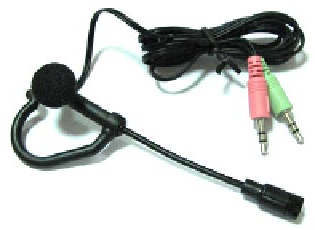Hardware Reference
In-Depth Information
3.5 mm Audio Jack
A standard technology for all portable headphones and earpieces, the 3.5 mm audio jack
is used for a variety of audio input and output devices, as you learned in Chapter 3. On
some systems, the jacks are color-coded; on others, tiny writing or symbols next to a port
identifi es its purpose. Figure 4.25 shows a microphone with 3.5 mm connectors.
FIGURE 4.25
3.5 mm connectors on a microphone
Photo credit: ©2010 Soundwise—Edinburgh, Scotland
ExpressCard and CardBus/PC Card
Some notebook computers have a multipurpose slot for add-on adapters that are
approximately the height and width of a credit card (only thicker). Adapters that fi t into
one of these slots can add any of a wide range of capabilities to the system, including
Ethernet, storage, add-on graphics cards, wireless networking, and TV tuners.
The original type of these slots was called PCMCIA, named for the association that
created it (Personal Computer Memory Card International Association). This association
lives on, and it continues to manage the current standard. Updated versions have been
released over the years that come in different sizes and shapes, which hook into different
buses inside the computer and transfer data at different rates.
ExpressCard is the current standard, which was fi rst introduced around 2005. It
fi ts into a 34 mm slot with a 26-pin connector. There are two types: ExpressCard|34
and ExpressCard|54. The latter is L-shaped so the connector portion is the same as
on ExpressCard|34. It can use either the PCI Express or the USB bus inside the computer.
ExpressCard devices have a throughput of up to 2.5 Gbps via the PCI Express bus or 480
Mbps through the USB 2.0 bus.
PCI stands for
peripheral component interconnect
. It's a rather fast bus
on the motherboard that carries data between expansion cards and the
system bus. The original version was just called PCI, but updated versions
called
PCI-Extended
(PCI-X) and
PCI Express
(PCIe) have been released that
are even faster. Make sure you know those acronyms for the Strata exam.
PCI-X is a double-wide version of PCI, used primarily in servers in the
early 2000s. PCIe is the current standard, and it's faster, smaller, and more
efficient than its predecessors.





















